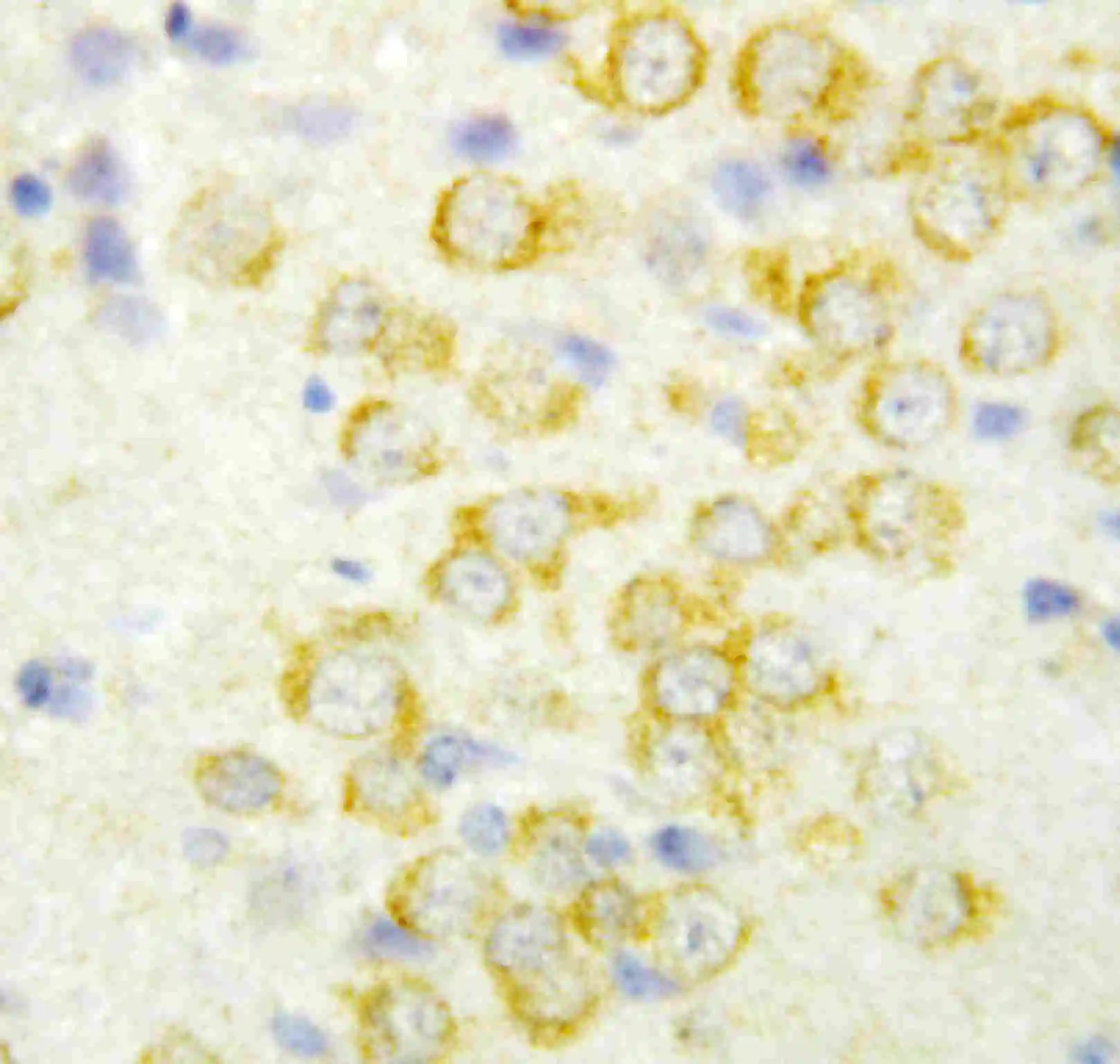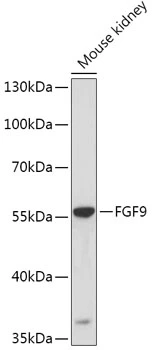FGF9 antibody [FG9-77]
GTX10424
ApplicationsDot Blot, Western Blot, ELISA
Product group Antibodies
ReactivityHuman, Mouse
TargetFGF9
Overview
- SupplierGeneTex
- Product NameFGF9 antibody [FG9-77]
- Delivery Days Customer9
- Application Supplier NoteDot: 5 microg/ml. *Optimal dilutions/concentrations should be determined by the researcher.Not tested in other applications.
- ApplicationsDot Blot, Western Blot, ELISA
- CertificationResearch Use Only
- ClonalityMonoclonal
- Clone IDFG9-77
- ConjugateUnconjugated
- Gene ID2254
- Target nameFGF9
- Target descriptionfibroblast growth factor 9
- Target synonymsFGF-9, GAF, HBFG-9, HBGF-9, SYNS3, fibroblast growth factor 9, fibroblast growth factor 9 (glia-activating factor), heparin-binding growth factor 9
- HostMouse
- IsotypeIgG1
- Protein IDP31371
- Protein NameFibroblast growth factor 9
- Scientific DescriptionThe FGF family consists of at least nine members (FGF1 to FGF9), with a 30-50% sequence identity at the amino acid level. All besides FGF8 contain two conserved positions of two cysteine residues. FGF9, also known as glia activating factor (GAF), was initially identified in the culture supernatant of a human glioma cell line as having the capability to promote glial cell proliferation. FGF9 is a heparin binding molecule, which is a glycosylated single polypeptide of 208 amino acids (23-30 kD, depending on rate of glycosylation), with a 30% sequence similarity with other members of the FGF family. The molecule is conserved across species (rat FGF9 is 94% identical to the human molecule). FGF9 has a unique spectrum of activity on cells, and it acts on the central nervous system. Although it has a mitogenic effect on fibroblasts like other FGFs, FGF9 has no effect on human umbilical vein endothelial cells. FGF9 stimulates the proliferation of oligodendrocyte type 2 astrocyte progenitor cells, Balb/c 3T3 fibroblasts and rat pheochromacytoma cell line PC-12. Human FGF9 is oncogenic when transfected into murine fibroblasts. Studies have identified FGF9 expression in brain and kidney. FGF9 binds specifically to FGF receptors 2 and 3, but not to FGF receptors 1 and 4. Like all other FGF ligands, FGF9 requires heparin sulfate for high affinity receptor binding and biological activities.
- ReactivityHuman, Mouse
- Storage Instruction-20°C or -80°C,2°C to 8°C
- UNSPSC12352203





